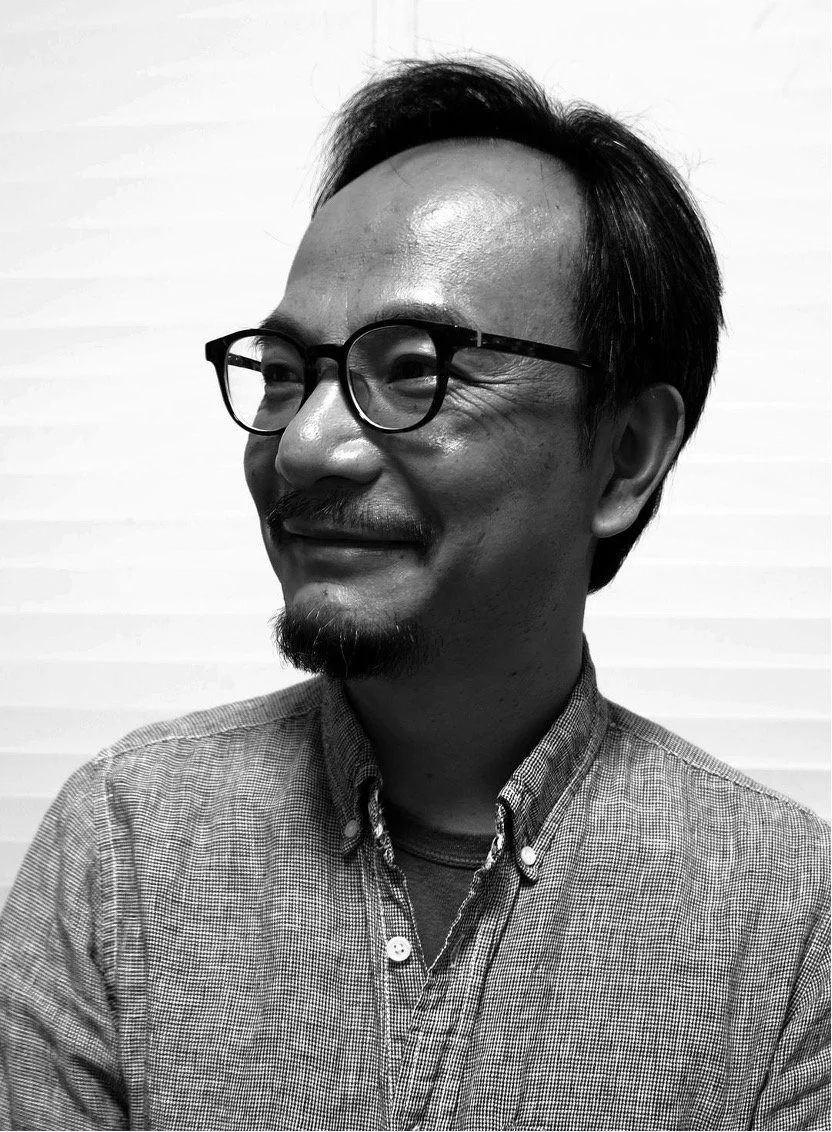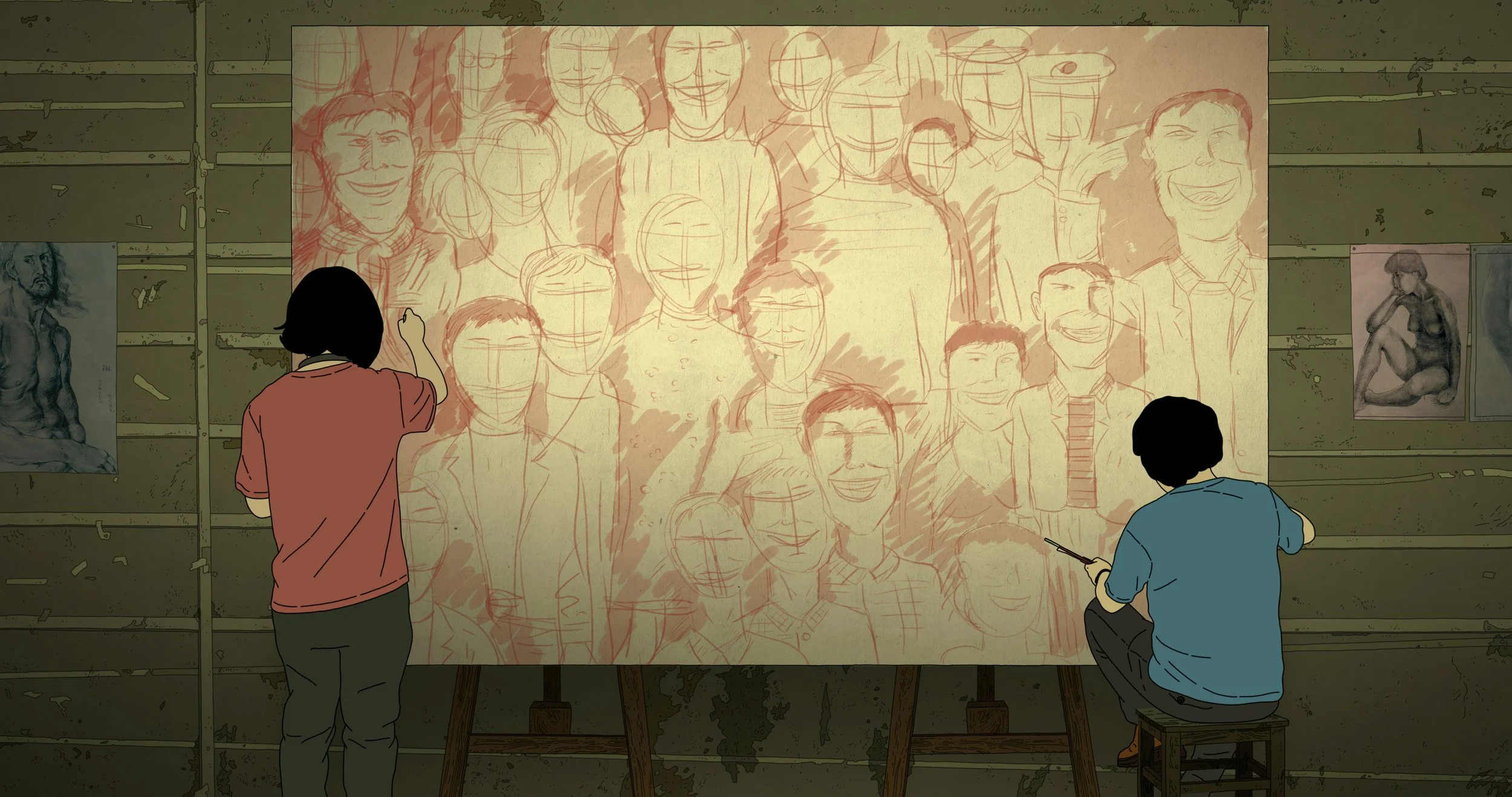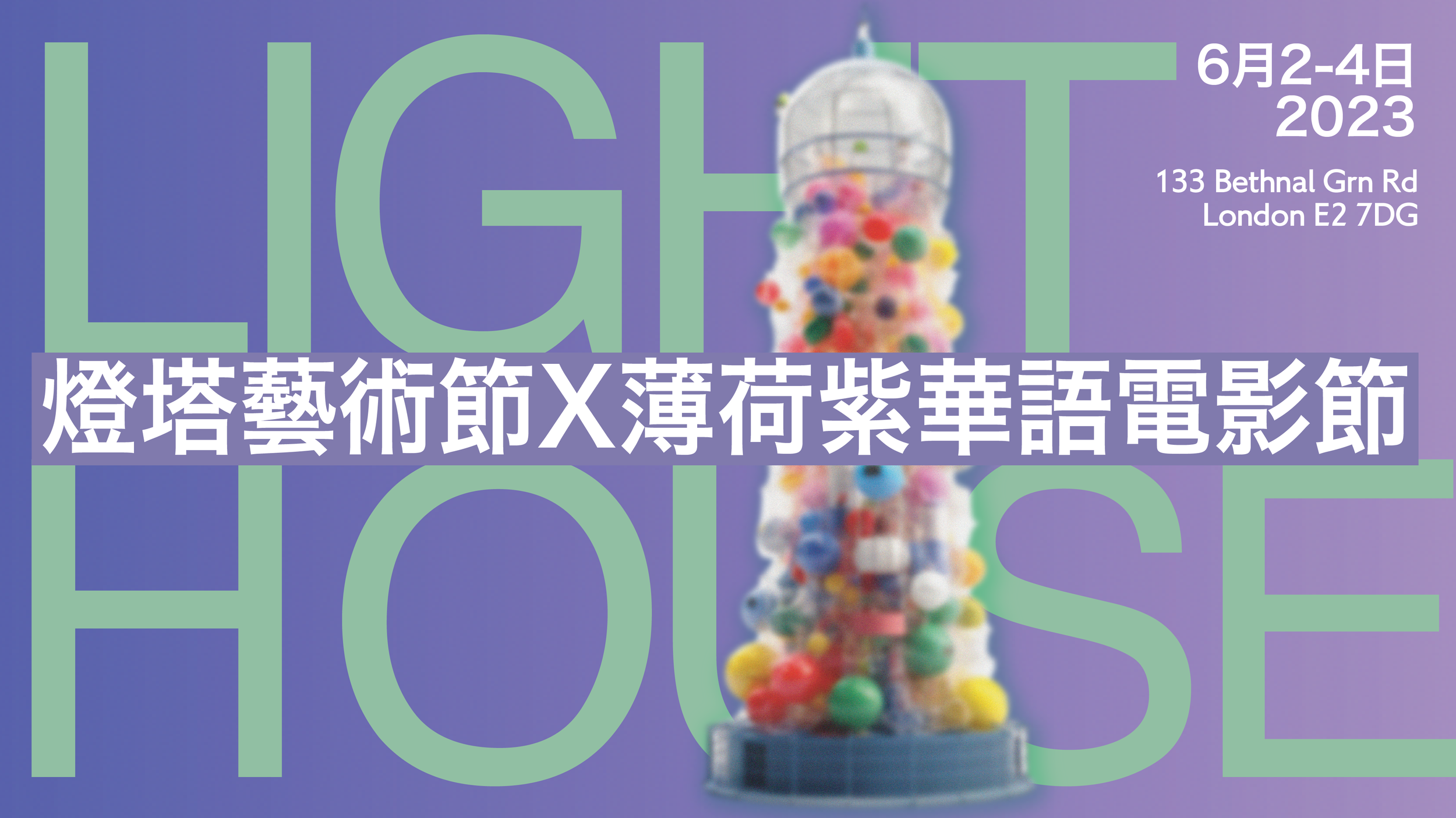Interview with Liu Jian: Art College 1994 – Memories of an Era Evoke Resonance of Emotions
English version article
Art College 1994 is the third animated feature created by Chinese director Liu Jian, following Piercing I and Have a Nice Day. It premiered in the Berlinale Competition section this year and received critical acclaim. As a semi-autobiographical animated film, Art College 1994 tells a story which takes place at Liu’s alma mater of his youth – Nanjing Art Institute during China’s reform and opening-up. The film revolves around the years of college students contemplating art, philosophy, love, youth, and ideals in an era when traditional culture clashed intensely with contemporary trends.
Clip of Art College 1994 (艺术学院1994 片段)
Art College 1994 is made by a team of teachers and students led by Liu Jian, who is currently a professor at the China Academy of Art. The film continues the hand-drawn 2D animation style in Liu’s previous two filmic works. Featuring the voice acting of prominent figures of China’s film and television industry, such as Jia Zhangke (Chinese director), Huang Bo (Chinese actor), Papi Jiang (Chinese comedian), and Zhou Dongyu (Chinese actress), the film tells a unique nostalgic story. On August 23, Art College 1994 will be screened at the Edinburgh International Film Festival.
Recently, the curation team of the Mint Chinese Film Festival invited Director Liu Jian to share the process of making Art College 1994. For a bilingual interview article in Chinese and English, please subscribe to the official website of the Mint Chinese Film Festival (unicornscreening.com) and check it out in the ‘Media and Blogs’ section.
Question: Mint Chinese Film Festival – Mint
Answer: Liu Jian – LIU
Director Liu Jian
Liu Jian (China, 1969) majored in Chinese Painting and graduated from the Nanjing Art Institute in 1993. Since then, he has made various works that met with the criteria of modern art and that were presented in some of the most important exhibitions in China and abroad. He is one of the representative artists of Gaudy Art and Conceptual Photography. He began working on animations in 1995 and founded Le-joy Animation Studio in 2007. Liu Jian also teaches animation filmmaking at the China Academy of Art. In 2017, his feature animation film Have A Nice Day premieres in competition at the Berlin Film Festival before being screened in more than 50 festivals worldwide including BFI London, Sitges, Thessaloniki and Annecy.
MINT: We would first like to know how you came up with some ingenious aesthetics approaches when making Art College 1994. For example, there are various Chinese dialects and characters in the film; these characters are voiced by famous figures in the industry whose appearances resemble the characters. How did you design these characters? When did the idea of inviting those Chinese famous figures who are strongly representative of different eras and cultures to do the voice acting come to you? How did you assign them to their roles?
LIU: We try to capture the diverse aspects of students in art colleges in the 1990s. Those students came from different places. Their personalities, accents, and backgrounds were all varied. That is why characters in this film are various. As for the idea of inviting people from the art community to participate in the voice acting, it was initially proposed by our producer. We evaluated the voices, personalities, and professions of candidates for each character and determined who would ultimately join our voice cast.
Still of Art College 1994
MINT: Most voice actors of the film are actually quite young and did not fully experience the era depicted in the film. How did you communicate and collaborate with them to enrich the characterisation?
LIU: Before voice acting, they received character profiles telling them traits of the characters. During the on-site recording session, we went through the lines and made adjustments again and again.
MINT: You have adhered to 2D animation and a realistic style since your previous works. There are also many ‘empty shots’, such as shots of the sky and landscapes, in your films. What is the special meaning for you to keep adopting this style to tell a story set in the period when you went to college?
LIU: It is more accurate to say that this style is what I am good at than saying that it holds special meaning to me. Perhaps my future works will still be in this style. I prefer to use techniques I can master and styles I am skilled in as much as possible when creating films. As for Art College 1994, because I majored in Chinese painting in college, our team tried our best to add some elements of Chinese painting to the film, such as its use of colours and lines, and its overall palette.
MINT: Your background in Chinese painting made us think of a scene in Art College 1994. In that scene, the female student from the music department who majors in piano and is voiced by Zhou Dongyu is shot in an ethereal manner, resembling Virgin Mary sculpture. However, at the bottom of the frame is the kind of baby images that usually appear in Chinese New Year pictures. As the camera moves up, we feel the fusion of Chinese and western elements. This scene is very impressive. Could you share your inspirations with us?
LIU: You are right about the fusion of Chinese and western elements. The composition of the sculpture was based on typical Chinese New Year pictures or folklore paintings. But we turned the artistic style of the sculpture to the one of western Virgin Mary sculptures. This combination aims to reflect the characteristic of that era when interactions between Chinese and western cultures were very sensitive and direct.
MINT: Congratulations on Art College 1994 having its world premiere in the Berlinale Competition section and having its regional premieres at many renowned film festivals at home and abroad. We guess you must have had lots of communication with the audience. Could you share some memorable audiences’ feedback with us?
LIU: Actually, there is no post-screening discussion with the audience at film festivals I attended, such as the Berlinale and the Annecy International Animation Film Festival. The feedback I received is mostly from my friends and people in the film industry. The producers may know more about the audience’ responses.
MINT: After the premiere of Art College 1994, we gathered some reviews from the audience and critics in Douban and other social media. There are voices saying that the students’ stories in the Chinese Southern Academy of Arts in 1994 slightly differ from the experiences of today’s young people. Viewers born in the latter half of the 1990s or in the 2000s may be not familiar with the cultural symbols of China in the 1990s. It is relatively hard for them to engage with the cultural memory-related parts of the film, such as the struggles of young people at that time and the film’s discussion of the youth’s mental states. In your opinion, what are the differences between contemporary artists and those in the 1990s in respect of spiritual and cultural lives and living conditions?
LIU: There should be plenty of differences rather than ‘slight’ differences. The phenomenon is normal, as times are changing and developing. Art College 1994 is set in 1994, a period when western culture was heavily introduced to China, as mentioned before. For young people at that time, we were curious about western culture, found it strange, and wanted to know about it. We also had confusion, especially when western culture collided with traditional Chinese culture. Because I studied Chinese painting, a kind of traditional art, these feelings were enlarged in me and other people of this major. When western modern art was introduced to China, we observed it and got to know about it. The problem was that it was different from what we had learnt. There were heated discussions among students. We also discussed with our teachers. There were debates on experience and even quarrels as well. We might reject our own artistic creations and started with a new style or technique which we thought was excellent. Then after a while, we found the new one was not what we wanted, either. Throughout the entire college life, this situation appeared again and again, just like what is depicted in some parts of the film.
Still of Art College 1994
MINT: We noticed that you explained your original intention of making the film in interviews with other media. In your opinion, how can those young audiences better understand your film? Do they need to find an entry point to walk into the memories belonging to artists of the 1990s?
LIU: Perhaps there are some barriers for today’s young people to understand the sociocultural context of the 1990s. It’s so far away from the present. People’s concerns, living environments, and their problems are all different. I think we could understand Art College 1994 from the emotions embedded in it. Young people share some common emotions associated with their thoughts about love, life, and the future. Art can be another entry point when we attempt to know about art, or in other words, to practice it and engage with it. Compared with the contemporary young generation, those in the 1990s were more innocent and idealistic, and less practical. In some topics, such as life and art, their words even appeared naive. However, from another perspective, those pure, simple, and unadulterated notions, wishes, and thoughts are precious in the current era.
MINT: It has been some time since the release of your last feature Have a Nice Day. As a Chinese animation filmmaker whose works have been twice selected for the Berlinale Competition section, could you share some of your inspirations and ideas when creating films? What kind of thoughts or attitudes to life do you want to express most through the animation language of your style? For example, both set in southern cities of China, Have a Nice Day and Art College 1994 reflected different eras and social issues. What are the differences and possible connections between the two films?
LIU: From the perspective of a director or a person working on artistic creations, it is natural to engage with and elaborate upon environments or states of living with which one is familiar. For me, animations are essentially films. They are not a special type but are merely a method of expression. There is no significant difference between making animated films and making live-action films. Have a Nice Day and Art College 1994 present some specific problems young people faced in different eras. Characters in the former were born in the 1960s and the 1970s; characters in the latter were the youth in 1994. Their problems vary by era, resulting in specific and subtle differences in styles of films. Although both Have a Nice Day and Art College 1994 are 2D animated films and adopt a realistic approach, there is an atmosphere of dark humour and absurdity in the former, while in the latter the landscapes and colours are richer and the pacing of narration is gentler. Thus, the style of each film is chosen based on the film’s theme.
Still of Have a Nice Day
MINT: From our conversation, we learned about your reflections on the collision of Chinese and Western cultures in the 1990s, which can also be found in the music appearing in Art College 1994. There are iconic Chinese and Western music which were popular during that period in the film, such as ABBA’s ‘Dancing Queen’ and Zheng Jun’s ‘Naked’. Could you talk about your thoughts on the use of these songs?
LIU: For me, music is important to films, and sound is extremely important to animated films. Unlike live-action films which have audio recordings in the filming stage, animated films start with a blank slate. So, we consider about sound and requirements of its settings when we write scripts. In Art College 1994, the first aim of music is to restore characteristics of that era. When people hear the music, they will feel the spirit of that era. In addition, I hope that music can serve some narrative functions in the film: it can fulfill its role whether in enhancing emotions or extending the storyline.
MINT: Would you be willing to share your expectations for Art College 1994 attending Chinese film festivals with the Mint CFF’s fans? We would also like to hear about your new projects.
LIU: I am more than happier to do so. Have a Nice Day was presented at many Chinese film festivals outside China, and we gained a lot from that. We are looking forward to introducing Art College 1994 to more Chinese film festivals as well.
MINT: You are now a professor of the School of Animation and Games at the China Academy of Art. It is coincidental that How I Grew Up, a short animated film directed by Liu Yufei who is an outstanding graduate of the China Academy of Art, was selected for screening at the first Mint Chinese Film Festival held at the Keswick Alhambra Cinema. The short film received lots of positive feedback from Chinese audiences living outside China in our touring exhibitions in Europe. Taking this opportunity, we would like to invite you to share some methods and advice with emerging filmmakers who are actively learning how to make or are currently making animations, to encourage those young animation creators who follow the Mint Chinese Film Festival.
LIU: Let’s work hard together! If you have the desire to create something, just do it. It is not necessary to wait for ideal states or perfect conditions. In my opinion, what is the most significant for creators is the inner desire to create things. If you have a strong desire, nothing can stand in your way.
At the end of this interview, Director Liu Jian expressed his wishes for the future success of the Mint Chinese Film Festival. The second Mint Chinese Film Festival will take place at the Keswick Alhambra Cinema in the Lake District, UK, on February 1, 2024, just before the start of the Year of the Dragon. We hope to reunite with Minters and welcome new audiences who are curious about cinema and Chinese culture there.
Co-founders and the curation team of the MINT CFF are now actively preparing brand new film programmes, screening sections, industry forums, creative workshops, and other online and offline film festival activities. We also plan to offer limited free festival accreditation to media friends and emerging Chinese curators. The new competition section of the MINT CFF is expected to begin its Global Call for Submissions in late September. The section is open to Chinese features and short films all around the world. Please subscribe to our official website (unicornscreening.com) and WeChat account (游霓映象) to stay updated. You are welcomed to review past Global Calls on our official website to familiarize yourself with the submission criteria. Please look forward to more exciting activities.
中文版专访文章:
专访导演刘健:时代回忆唤起情感共鸣,《艺术学院1994》
《艺术学院1994》(Art College 1994)是中国导演刘健在《刺痛我》(Piercing 1)和《大世界》(Have A Nice Day)之后创作的第三部动画长片,在今年柏林电影节的主竞赛单元首映并大放异彩。《艺术学院1994》是一部半自传动画电影,故事发生在导演刘健的青年时期的母校——中国改革开放时期的南京艺术学院(Nanjing Art Institute),讲述了大学生在这个传统文化与当代思潮激烈碰撞的年代,思考艺术、哲学、爱情、青春和理想的岁月。
《艺术学院1994》由目前在中国美术学院担任教授的刘健带领师生团队制作,延续了导演前两部作品的手绘2D动画风格,贾樟柯[YD3] 、黄渤、Papi酱,周冬雨等中国影视化行业知名人士在其中贡献了声音演出,带来了一个别样的怀旧故事。《艺术学院1994》将于8月23日登陆爱丁堡国际电影节(Edinburgh International Film Festival)。
近日,薄荷紫华语电影节(Mint Chinese Film Festival)策展团队邀请刘健在采访中分享他的创作历程。请点击文末“阅读原文" 薄荷紫影节官网于Media and Blogs界面查看中英双语专访文章(官网网址:unicornscreening.com)。
导演专访正文:
预估阅读时间8分钟
问:薄荷紫华语电影节-薄荷紫
答:刘健-刘
导演刘健
刘健,1969年出生于江苏省,中国动画导演、编剧、制作人、教师,毕业于南京艺术学院中国画专业。2007年,创立乐无边动画工作室。2010年,历时3年制作的个人首部动画电影《刺痛我》入选第50届昂西动画节最佳动画长片奖竞赛单元。2017年,自编自导的动画电影《大世界》作为首部入围柏林电影节主竞赛单元的中国动画长片,获得国内外多项大奖。
薄荷紫:首先想了解您在创作时的一些想法和巧思是如何形成的。例如,成片里不仅有各种方言和人物形象,这些人物还是由许多业内著名人士贡献的声音;他们的外形也与角色相似。您当时是怎样去设计和构思这些人物的?是什么时候想到邀请这些名人——非常有时代和文化特性的人物来进行配音,他们角色上是怎样分配的?
刘:人物是尽可能还原90年代艺术学院学生的不同面貌,本身他们来自不同的地方,有不同的性格、口音、生活的背景都不太一样。请很多艺术界的朋友来一起来参与配音的这个方案,最初是制片人提出来的。我们会商量每个角色的候选人,大家根据他的声音、性格、职业确定最终邀请谁来加入我们的声音演出。
《艺术学院1994》剧照
薄荷紫:片中的配音演员其实很多还很年轻,也没有经历过完整的电影中所反映的时代背景,您是怎样和他们交流沟通,合作去丰富影片中这些人物形象的?
刘:配音之前我们会给一些人物小传,告诉他们剧本中这个人物的特点是什么。在现场我们会一遍一遍地过,一遍一遍地调整。
薄荷紫:从您之前的作品开始,您一直坚持2D动画、现实主义的画风,其中又会加入很多“空镜头“(如天空、风景等)的设计。坚持以这样一种风格去讲述一个以您上学时期为背景的故事,对您有怎样特殊的意义呢?
刘:与其说特殊的意义,应该说这是我擅长的,可能我一如既往,后面的作品还是这样。对于我来说,创作当然是尽可能做自己擅长的、可以掌握的技术手段。而还原到90年代,因为我当时在大学里学的是中国画专业,所以在《艺术学院1994》里面,我们尽可能加入了一些中国画的元素,比如说它的用色、用线,它的整个色彩趣味。
薄荷紫:听您说到学国画,我们还挺想了解一下,在《艺术学院1994》里有一个片段,周冬雨配音的音乐系学钢琴的女学生,她被幻画成一个类似圣母像的女性形象,但画面底部是福娃的形象,随着镜头慢慢往上推,我们能感受到有一种中西合璧的画像。这一幕非常特别,想问问您的灵感来源。
刘:这里的中西合璧说对了,这其实是根据我们中国典型的年画,或者说民俗画的构图方式来创作,又把它变成了西方圣母像的艺术风格,所以是将二者结合。也是为了反映当时的时代特性,就是中西文化互动特别敏感、特别直接的一个时代。
薄荷紫:也要恭喜您的电影今年在柏林主竞赛影片进行世界首映,并在国内外很多知名影展上进行了地区首映。我们猜您一定跟观众有了不少的交流,您可以谈谈印象比较深的一些观众反馈吗?
刘:其实我参加的比如柏林、(法国)昂西(国际动画电影节)这些影节,还真没有映后跟观众交流的环节。更多是遇到一些朋友以及业内人士与我谈及。直接的观众反馈,制片人可能会收到相对多一些。
薄荷紫:其实首映后我们从豆瓣等社交媒体了解到一些观众与影评人对《艺术学院1994》的评价。一部分人认为,影片所描绘的94年南方大学艺术学院中学生群体的故事,和时下年轻人的生活体验略有不同。95/00后观众可能不太熟悉中国90年代的文化符号,比较难代入影片中有关文化记忆的情节,例如当时青年人的挣扎、精神状态的探讨等等。对此,您认为现在的艺术工作者们相比起90年代有哪些变化呢,无论是精神文化生活,或是生存状态上的?
刘:实际上应该有很多不同的地方,而不是仅仅是略有不同,但时代在变化,在发展,这应该是非常正常的现象。《艺术学院1994》设定在1994年,我们刚才也说,这是西方文化大量引入中国的时期,对当时的年轻人来说,感到很好奇、新鲜,想要了解,也会有一些困惑,尤其当它与我们中国的传统文化碰撞的时候。因为我学的是中国画,我们的感受更加尖锐。可以说我们学的是传统艺术,西方现代艺术引入进来的时候,我们也在观察它、了解它,遇到的问题在于,与我们之前学习的经验不一样。同学之间会有许多讨论,同学和老师也会有讨论,一些经验上的辩论,甚至吵架也是有的。我们可能会否定自己的艺术创作,然后重新开始一个新的、自己觉得特别好的艺术风格,或者技术手段,但过一段时间又发现那也不是自己想要的方式。在整个大学读书的过程当中,这种情况是交替出现的,就像电影里的一些情节表现出来的。
《艺术学院1994》剧照
薄荷紫:我们也看到您在其他媒体采访中阐述了您的创作初衷,那您认为这批年轻观众可以怎样更好地理解您的电影呢?他们是不是需要寻找一个切入口,去走进一段属于90年艺术工作者的记忆?
刘:可能现在的年轻人理解90年还是有一些屏障,相隔得太远,大家所关心的、所处的环境、所面临的问题都不一样。我想应该可以从情感出发,因为年轻人面临的,对于爱情、生活、未来的一些想法,其中的情感是共同的。还有从艺术作为切入口,我们尝试去了解艺术,或者说实践它、接触它。因为90年代的人相对于目前年轻人的状态显得比较单纯,比较理想化,比较不切实际,甚至在有些话题上,比如说对人生和艺术的谈论,显得幼稚。我们可以换一个角度看,反而这样的单纯、简单、干净的理念、愿望和想法,对于当今的时代来说,是显得比较珍贵的。
薄荷紫:距离您上一部作品《大世界》已经过去了一段时间,您作为两度以动画电影入围柏林主竞赛单元的中国导演,我们想请您分享一些您的创作上的灵感与想法。在您看来,您最希望用这样风格化的动画语言展现怎样一种思考,或对生活的态度?例如以南方城市为背景,《大世界》和《艺术学院1994》反映了不同的时代和社会议题,其中有什么不同和可能的联系?
刘:从一个导演的角度,或者从艺术创作的角度,肯定是实践和阐述自己比较熟悉的环境或生存状态。动画对我来说,其实就是电影,并不是一个特别的类型。它只是一种表现手法,和实拍一部电影创作起来没有什么差别。《大世界》和《艺术学院 1994》表达的是不同时代的年轻人面临的一些具体问题,一个是94年,《大世界》里面则是70、60年代左右出生的人。不同的时代,人们有不同的问题,在电影创作时就会在风格上呈现出具体的、细微的差异。整个二维风格的动画一如既往,写实风格也一如既往,但《艺术学院 1994》的一些景色,色彩会丰富一点,(故事)节奏相对比较舒缓一点;《大世界》则创造出一种黑色幽默、荒诞的氛围。所以说风格是根据电影阐述的主题来设定的。
《大世界》剧照
薄荷紫:对话中我们了解到您对当时中西文化碰撞的思考,这也体现影片中出现的音乐上,我们听到了非常经典的、当时流行的中西方音乐,比如说ABBA的Dancing Queen,还有郑钧的《赤裸裸》,您在这些音乐的使用上是有怎样的想法?
刘:对我而言,音乐在电影当中的分量是比较重要的。我想对于动画影片,它的声音尤其重要。因为我们不像实拍类的电影,前期会有声音的底样,我们是完全空的,所以对于声音的思考,对声音设定的要求,从写剧本开始就会有一点概念。音乐首先是还原,还原那个时代的特质,大家听到这个音乐的时候,就会感受到时代的气息。然后我希望音乐在电影里可以起到一些叙事功能,无论是对情绪的烘托,还是对剧情的延展,它都可以起到一些应有的作用。
薄荷紫:您愿意和薄荷紫的观众分享一下您对《艺术学院1994》参与海外华语影展的展望吗?我们也想请您分享一些新的创作计划。
刘:我当然很乐意,其实《大世界》当初也参加了很多海外华语电影节,有了很多的收获,《艺术学院1994》依旧会争取参加更多华语电影节。
薄荷紫:您目前是中国美术学院动画与游戏学院教授,很巧的是我们首届影展曾入选该学院优秀毕业生刘宇飞的动画短片《芳的蜡烛》, 在巡展中收获海外观众一众好评。借此机会,我们想邀请您给正在积极学习创作,或正在制作动画的青年导演,分享创作上的方法和建议,鼓励一下关注薄荷紫华语电影节的海内外青年动画创作者们。
刘:大家一起加油,一起努力!如果你想做了,你想去创作,那就马上拿起来去创作,不一定要等到最理想的状态,或者说要多好的条件才可以创作。我觉得作为一个创作者,最重要的是自己内心的创作欲望,如果有了强烈的创作欲望,这是谁也挡不住的。
采访尾声,导演刘健还表达了对薄荷紫华语电影节未来越办越好的祝愿。第二届薄荷紫华语电影节将在2024年2月1日,龙年前夕,于英国湖区凯西克阿罕布拉电影院(Keswick Alhambra Cinema)与薄荷紫粉丝和广大观众再见。
第二届电影节预告
薄荷紫主创成员及策展团队正在积极筹备全新的电影节目、展映单元、产业论坛、创意工坊等线下线上影节活动,并计划面向广大海内外媒体和新兴华语策展人开放限量免费影节认证。薄荷紫新竞赛板块全球征片预计在9月底启动,现已邀请数位国际知名电影人、视觉艺术家、及文化专家加入评审团,届时将面向全球华语长片和短片创作者以及华人华裔影人进行征稿,敬请期待。新一届全球征集相关信息请持续关注影节官网和公众号(游霓映象),欢迎访问官网相关界面查阅往期全球征集令。
更多精彩内容,请订阅薄荷紫影节官网,关注游霓映象公众号!
鸣谢(acknowledgement)
受访嘉宾(interviewee):导演刘健 Jian Liu
文章翻译(translator):王颖洁 Yingjie Wang
问题贡献(question contributors):林怡翔Yixiang Shirley Lin、董一骄 Yijiao Dong、王少阳 Shaoyang Wang
问题编辑(question editor):李熙赟 Simyun Li
专访编辑(article editor):林怡翔Yixiang Shirley Lin、张紫略 Zilue Zhang
关于薄荷紫:
薄荷紫华语电影节是英国首个由女性组织的华语主题影节,由新锐电影策展人林怡翔(Yixiang Shirley Lin)和阿罕布拉影院主理人卡罗尔雷尼(Dr Carol Rennie)共同创立,聚焦华语电影的跨文化交流和女性形象的银幕再现。薄荷紫华语电影节近日正式于英国注册为社会利益公司。作为全年度活跃的影节,薄荷紫不仅在凯西克阿罕布拉影院举办年度华语电影节,还积极在英国各地和全球其他地区策划组织拓展电影展映和相关文化艺术活动。薄荷紫旨在为为未被充分代表的声音、形象和故事进行策展,积极挖掘并支持新锐女性、多元(非二元、跨性别)和酷儿导演,意在将独立先锋的优质华语电影和其他文化艺术作品(尤其是女性作品)推介至鲜少有机会接触华语电影及文化的地区,以承担作为英国第一个由女性组织筹办的华语电影节的文化及艺术责任。
首届薄荷紫华语电影节已于2023年2月5日于英国北部湖区坎布里亚郡的凯瑟克阿罕布拉电影院(Keswick Alhambra Cinema)落幕。首届影节取得了巨大成功,入场人数超过 1000 人次,其中 75% 为华人(裔),70% 为女性/性别非二元。截止至今日,薄荷紫已在伦敦、巴黎、北京等地合作策划举办了多场特别电影展映及巡回展览。
缘起于英国美丽湖区的薄荷紫华语电影节立足华人文化,力求探索华语电影的创意策展形式,重拾文化身份与价值,让华语电影触及当地社群、年轻观众、各界影迷与国际创作者,促进多元电影文化的传播与交流。此外,薄荷紫关注‘女性电影’(women' s cinemas)与女性电影从业者现状,借助影像中的女性再现社会性议题,期望建立国际电影产业中的亚洲女性代表和话语空间。在首届影展全球公开征片中,影节组委会收到超过400份作品,其中来自女性报名者的占总数量36.4%,男性报名者占57.8%,其TA/性别非二元报名者占5.8%。秉持着一种独立而开放的策展精神,薄荷紫希望通过电影这一包罗万象的形式,在创意策展的实践中,从女性主创们以及当代电影创作者们的视角向世界观众传递华人文化内涵。
往届影展
往期巡展、特别展映








